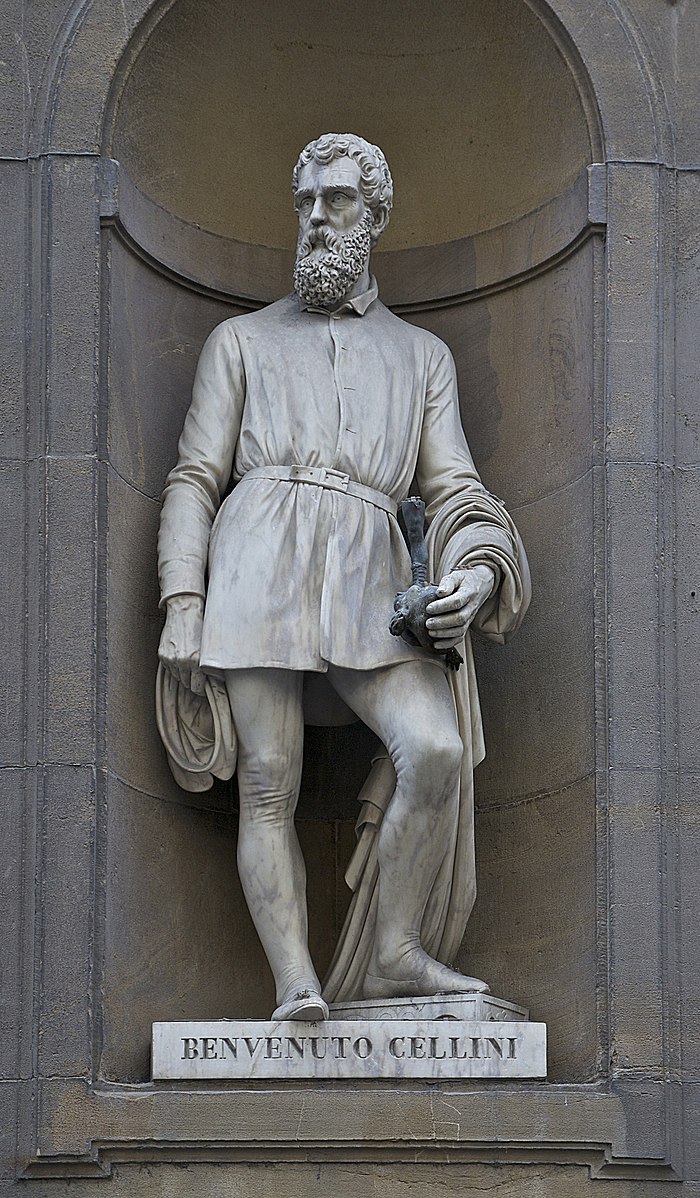In his 1885 publication recounting his exploration of the City of Florence, author Emilio Bacciotti, described Ulise Cambi, who died on April 7th, 1895, as “one of the old glories of the Academy of Fine Arts.” (p.29). He continued by listing many of the most famous works of the artist including a number of portraits of famous men including his “living and speaking statue” of the Carlo Goldoni and his depiction of Benvenuto Cellini in the Uffizi portrait gallery. Cambi is praised for the way that his work combined neoclassical form with naturalism. It was this synthesis that led to his Love as a Beggar, to be displayed at the 1855 Exposition in Paris.
Born on September 7, 1807, Cambi, the son of sculptor Pietro Cambi who studied first at the Accademia di Belle Arti e Liceo Artistico in Florence, was, by 1833, in Rome. By 1841 he had a professorship at the Accademia and had begun work on a number of projects including his funerary monument to Luigi Sabatelli in Santa Croce. His popularity grew based on the success of that, and other, projects.
References: “Cambi, Ulisse.” Grove Art Online. Oxford Art Online. Cambridge University Press. https://doi-org.libpdb.d.umn.edu:2443/10.1093/gao/9781884446054.article.T013286; Bacciotti, Emilio. Bacciotti’s Handbook of Florence and its Environs. Florence: Tipografia Mariani, 1885.
Image credits:
Benvenuto Cellini, Uffizi Gallery, Florence, 1845 (Wikimedia Commons)
Monument to Carlo Goldoni, Piazza Goldoni, Florence, commissioned 1853 (Rufus 46, Wikimedia Commons)
Fountain, Piazza del Duomo, Prato (Sailko, Wikimedia Commons)
Further reading: Karen-edis Barzman, The Florentine Academy and the Early Modern State: The Discipline of Disegno. Cambridge: Cambridge University Press, 2000; Marjorie Trusted, The Return of the Gods. London: Tate Gallery, 2008.



